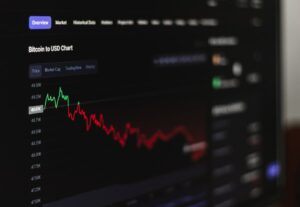The Basics of Forex Trading in the US: A Comprehensive Guide
Forex, or foreign exchange, trading has become increasingly popular in the US over the past decade. With its potential for high returns and accessibility to individual traders, it has attracted a wide range of investors looking to diversify their portfolios. However, before diving into the world of forex trading, it is essential to understand the basics of how it works, especially within the US market.
What is Forex Trading?
Forex trading involves the buying and selling of currencies. Unlike the stock market, which focuses on the trading of shares of companies, forex trading revolves around the exchange rates between different currencies. The goal is to profit from the fluctuations in these exchange rates by speculating on whether a currency will appreciate or depreciate against another.
Forex trading takes place in the decentralized global market, where banks, financial institutions, and individual traders participate. The market operates 24 hours a day, five days a week, allowing traders to take advantage of opportunities around the clock.
Understanding Currency Pairs
In forex trading, currencies are traded in pairs. Each pair represents the exchange rate between two currencies. For example, the EUR/USD pair represents the exchange rate between the euro and the US dollar. The first currency in the pair is known as the base currency, while the second currency is the quote currency.
When trading a currency pair, the trader is speculating on whether the base currency will appreciate or depreciate against the quote currency. If the trader believes the base currency will strengthen, they would buy the pair. Conversely, if they anticipate the base currency will weaken, they would sell the pair.
Regulation in the US Market
Forex trading in the US is regulated by multiple government agencies to ensure fair and transparent trading practices. The primary regulatory body is the Commodity Futures Trading Commission (CFTC), which oversees the futures and options markets, including forex trading. The National Futures Association (NFA) acts as a self-regulatory organization under the supervision of the CFTC.
To engage in forex trading in the US, individuals must open an account with a broker registered with the NFA. It is crucial to choose a reputable broker that adheres to strict regulatory guidelines to protect your funds and ensure a fair trading environment.
Leverage and Margin Trading
One of the key features of forex trading is leverage. Leverage allows traders to control larger positions with a smaller amount of capital. For example, with a leverage ratio of 1:100, a trader can control a $100,000 position with just $1,000 in their account. While leverage can amplify profits, it also increases the risk of losses. Therefore, it is essential to exercise caution and manage risk effectively when using leverage.
Margin trading is closely related to leverage. It refers to the use of borrowed funds from a broker to trade larger positions. Traders must maintain a certain level of margin in their account to cover potential losses. If the account falls below the required margin level, the broker may issue a margin call, requiring the trader to deposit additional funds or close out positions to restore the necessary margin.
Risk Management and Trading Strategies
Successful forex trading requires a solid understanding of risk management principles and the development of effective trading strategies. Risk management involves setting stop-loss orders to limit potential losses and taking profits at predefined levels. It is crucial to determine the appropriate position size and risk-reward ratio for each trade to ensure a balanced approach.
There are various trading strategies employed by forex traders, including technical analysis, fundamental analysis, and sentiment analysis. Technical analysis involves studying price charts and using indicators to identify patterns and trends. Fundamental analysis focuses on analyzing economic and geopolitical factors that may impact currency values. Sentiment analysis involves gauging market sentiment and investor behavior to anticipate future price movements.
Conclusion
Forex trading in the US offers individuals the opportunity to participate in the global currency market and potentially generate profits. However, it is essential to grasp the basics of forex trading before getting started. Understanding currency pairs, regulations, leverage, margin trading, risk management, and trading strategies are key elements to becoming a successful forex trader. With proper education, practice, and discipline, individuals can navigate the forex market with confidence and increase their chances of success.






